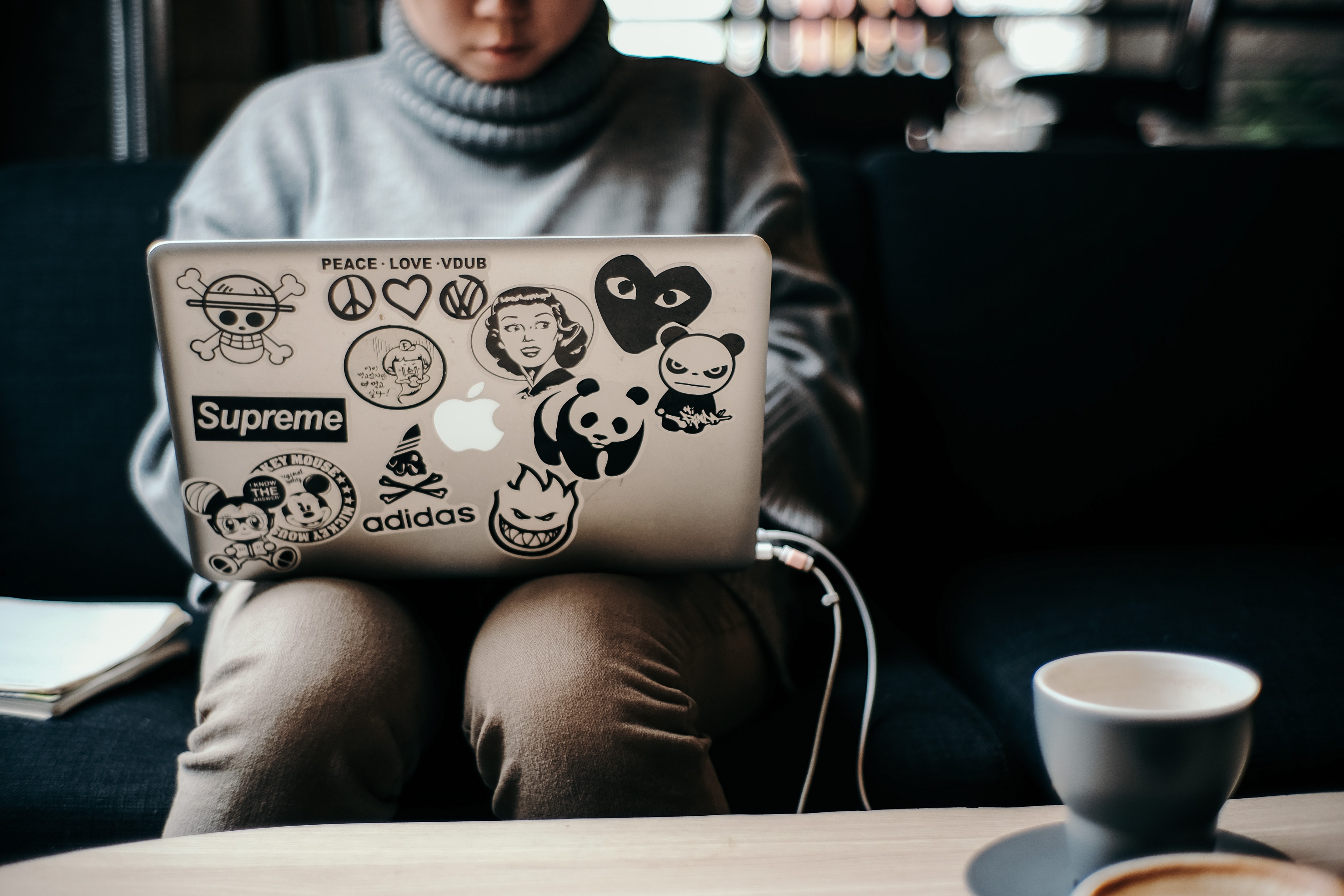Influencer marketing has definitely proven impact on consumers and the choices they make. Modern brands are expected to spend billions on influencers by 2022. The constant growth and changes in the influencer market create new approaches in it. Hybrid influencer marketing is a new trend that alters the concepts of content creation.
Influencer marketing received a surge of attention and a jolt of change in 2020. We’ve all spent a lot more time at home this year, which has led to a huge increase in the consumption of online content. TikTok global downloads jumped from 199 million in the tail-end of 2019, to 315 million downloads in 2020’s first quarter.
The demand for content is still on the rise, and estimates show that the influencer space should grow into a 5 to 10 billion dollar industry by 2021. To give that some context, Instagram, the most influential social media platform, hosted a $2 billion influencer space at the start of 2020.
The new dynamic has accelerated changes in influencer marketing agreements that have been brewing for years. In the past, businesses typically worked with influencer networks to connect with creators and make promotion deals on their behalf. Now, businesses take a more active role in developing longer-term relationships with influencers with greater relevance to their audience.
A result is a hybrid approach to influencer marketing where influencers work to produce high-quality content for their audience that incorporates brands in a meaningful way instead of simply advertising.
The Hybrid Approach
Marketers are changing the way they approach influencer content. Instead of approaching it as a way to buy ad placements and sponsored segments on popular channels, it can be used as a way to commission high-quality content that resonates with your audience and engages them with your industry.
Why is this a more effective approach?
Unlike viewing influencers as a media buying strategy, this hybrid approach is based on the reasons people watch influencers in the first place. An influencer’s success is founded on the trust between them and their audience. Viewers value their opinion and understand the perspective and bias of the influencers they watch.
It’s similar to word-of-mouth marketing, where the potential customer views the influencer as providing an honest look into a specific company or product.
As a result, influencer collaborations work best when they tie into the content their audience shows up for. For example:
- videos explaining the science or tech behind your product;
- “I Tried This Product So You Don’t Have To” content;
- Testing out niche products or materials;
Influencers use these concepts within their content creation to cultivate social proof. They haven’t simply read your boilerplate but taken the time to investigate, use it and form a real opinion their audience can believe. An influencer may do this with a sponsorship, affiliate relationship, or without any relationship to the company or product.
In the case of review and product comparison content, influencer integrity is vital and will reflect on the businesses they work with. Sponsorship deals that encourage or incentivize a dishonest review will hurt you in the long run. As a result, it is important to understand that great influencer content will also include some criticism of your product.
For example, Chloe Rose Art often compares art supplies between two or more different retailers. She provides a clear, side-by-side comparison and includes product failures and areas where her affiliate’s competitor holds an advantage. While her review is not 100% positive of her affiliate’s product, this makes her overall conclusions more trustworthy.
AI and Other Tech Tools Enabling Hybrid Marketing Approaches
AI has changed marketing year after year, helping brands connect with the right creators and cultivate more relevant content. When it comes to hybrid influence, there’s a unique role for AI and influencer marketing.
With Natural Language Processing or NLP AI, platforms can classify influencers based on their industry, interests, market demographics, brand associations, and more. Visual AI tools are accomplishing the same thing through visual content.
How does this enable a hybrid approach?
- Companies can find influencers that fit their brand image and target demographics.
- Influencers can find sponsors who align closely with their interests and audience.
- Influencers can use machine learning to keep content relevant to their brand in every sponsorship.
- NLP AI also allows platforms to root out fake engagement, paid followers, bots, and other fraudulent influencer tactics more easily, reducing your risk of paying to reach an audience that doesn’t really exist.
However, AI is only one factor of technology affecting change in influencer strategies. Texting and instant messaging are changing how influencers communicate with their followers, and that changes how companies want to work with influencers.
Instagram and other platforms enable followers and influencers to communicate off the platform through texting or live chatting. Influencers are even using MMS, or Multimedia Messaging Services in fresh ways to reach their followers. The benefits of MMS messaging are substantial, but companies overlook these possibilities. The ability to text images, video, and other media lets influencers match the style and quality of their content in their direct messages.
Through MMS messaging, influencers are sending contact cards, video updates, exclusive content, and promotions exclusively to their text subscribers.
Unpaid Organic Influencers and Their Impact
Independent content creators were the first organic influencers. Not paid by the businesses they covered, their opinions are considered authentic and unbiased. This is the root of their success and as a result, they won’t change their content or their image to suit your brand.
One example is Youtuber Bunny who tests items from infomercials and As Seen On TV products.
A recent video was a complete unboxing and review of the updated version of the SodaStream. She was sure to leave an FTC note in her description that she wasn’t paid for her opinion, and has no affiliation with the company.
Many of her followers show up simply for the entertainment value and didn’t necessarily go looking for a SodaStream video. However, SodaStream probably experienced an effect from the nearly 400,000 views.
While you can’t hire these content creators to cover your business, you can still get their attention.
Ads Have Lost Their Power
Unpaid organic influencers have an impact because people hate ads. Consumers want to see content, not a sales pitch. When it comes to making a purchasing decision, people are more likely to seek a trusted opinion than your advertising.
Recent findings show that:
- 65% of YouTube viewers skip ads regularly
- 91% of respondents reported that ads are more intrusive now than in recent years
- 87% have noted a dramatic increase in the number of ads they see daily
Unpaid influencer videos, blogs, or social media posts aren’t ads and that’s what people appreciate. However, they can still sway public opinion.
A company can present their products to these influencers for review, or use, but this is a risk. It’s possible that the influencer could have negative things to say about the product. Always research unpaid influencers to ensure they will love your business, as they have no reason to soften their criticism.
It also pays to keep an eye out for influencers covering your product of their own volition. If an independent reviewer loves your brand, this can offer many opportunities to show leads to their unbiased opinion. Referencing their video in your own content can be a great way to show their community you noticed their attention, and get another mention on the influencer’s channel.
Influencer Houses, Employee Influencers, and Pop Culture
One of the biggest challenges of influencer marketing is finding the right influencers.
You want to retain control of your brand image and the content you are associated with, but working with an influencer means they reflect on your brand image. One way businesses negate this risk is through an employee influencer program.
An example of this is the Starbucks Partnership profiles. Through social media, Starbucks hands the marketing reins over to their employees by allowing them to take accountability for their role in the brand.
Influencer houses are another alternative to fully independent influencers. These influencers blur the lines between their brands and the companies they have relationships with. This can take more research to ensure your values align with everyone involved.
About 85% of businesses report that it’s becoming more challenging to find influencers appropriate to their brand. Prioritizing long-term partnerships has enabled companies to find influencers with the right image and interests, and provide content with genuine value for their audiences. As a result, it offers the possibility of a $6.50 return on every $1 invested, thanks to closer contact with the target market.
The Future of Influencer Marketing
The trend of closer collaboration between brands and influencers is still recent, so it is likely to change and develop over the next few years. Already there is a clear promise of more significant impact from organic influencers and scaling back on paid or sponsored ads.
We should expect this tactic to continue to grow in popularity, with influencers using sponsorships to bring more engaging content to their viewers instead of simply paying the bills.
What is your opinion about this new approach to influencer marketing? Will it positively impact the created content in the long run?









